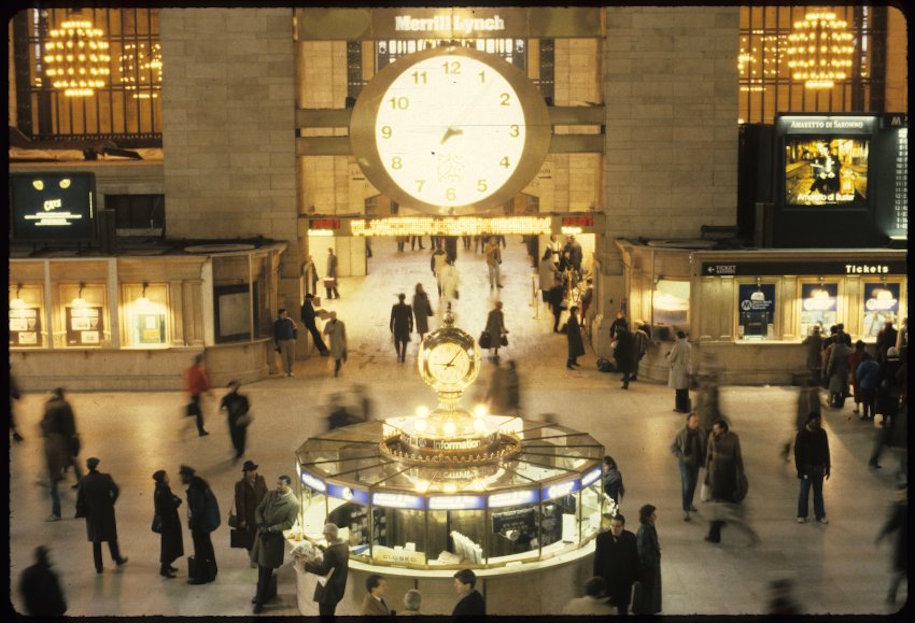New York City’s Grand Central Station is one of the nation’s most cherished transit hubs. The station is not only architecturally stunning, but also heavily used by the region. More than 750,000 subway and train commuters pass through its halls every day.
While the city recognizes Grand Central as a historic landmark today, that wasn’t true several decades ago. In the mid-1970s, developers sought to partially demolish the complex and build a 53-story office tower on top.
A group of preservationists – aided by First Lady Jacqueline Kennedy Onassis – battled with the developers, and on June 26, 1978, the Supreme Court ruled that any proposal to tear down the terminal would be denied.
The decision set a precedent for other historic buildings across NYC.
"There was a real groundswell effort to protect the landmarks and legacy of historic structures in New York," Amy Hausmann, senior curator and deputy director for collections and exhibitions at the New York Transit Museum, told Business Insider.
Take a look below.
June 26 marks the 40th anniversary of a monumental Supreme Court decision that saved and helped preserve Grand Central Station in Midtown Manhattan.

In 1913, Grand Central Terminal opened to the public, after 10 years of construction and at a cost of over $2 billion in today's dollars.
In the mid-'70s, railroad executive Stuart Saunders — whose transportation company owned Grand Central — wanted to make the station as profitable as possible.

Saunders also spearheaded the demolition of the original Penn Station in New York.
He envisioned demolishing one of Grand Central's terminals and building a 53-story skyscraper in its place. Here are a few proposed designs by architect Marcel Breuer:

At first, the Landmarks Preservation Commission denied Saunders' proposal. But he wouldn't take no for an answer, so he sued the city.

In 1975, a New York State Supreme Court judge sided with Saunders, ruling that the terminal's "long neglected faded beauty" wouldn't be missed.
Preservationists and many New Yorkers immediately embarked on a fight to save the station from any demolition. The Municipal Art Society of New York formed a committee (which included First Lady Jackie O.) that led the effort.

Onassis told reporters in 1975, "We've all heard that it's too late … Even in the 11th hour, it's not too late."

A crowd gathered for a rally against the development on April 21, 1977. And about a year later, the Supreme Court ruled that no developer would ever be allowed to demolish Grand Central.

Two decades later, Grand Central underwent a $113.8 million renovation. Here's what it looked like before the work, completed in 1998:

A skyscape with constellations was painted on the Main Concourse ceiling. All billboards were removed as well.

As Untapped Cities notes, the new ceiling required dozens of people to create but was primarily the work of five men: architect Whitney Warren,French artist Paul Helleu, muralist J. Monroe Hewlett, painter Charles Basing, and astronomer Dr. Harold Jacoby of Columbia University.
Before the renovation, the Main Concourse was a bit dim, largely because blackout paint was applied to the windows during World War II.

During WWII, the American military closely guarded the station, because troops often moved through it.
Crews removed any remaining blackout paint on the windows to let in more natural light. The new staircases were modeled after the Grand Staircase in the Paris Opera House.

Tucked inside one of Grand Central's terminals, the Campbell Apartment was originally the private office and reception hall of Jazz Age financier John W. Campbell. After his death, the space fell into disrepair.

Throughout the mid-20th century, its purpose ranged from a storage room to a police holding cell.
The room was later restored to its early 20th century design and turned into an ornate cocktail lounge called the Campbell.

Before the station's retail development in the '90s, the Lower Level Concourse largely went unused. Commuters could grab tickets at the box office or mill about while waiting for their trains.

The concourse now has 20 food retailers and ample seating.

With regards to the 1978 Supreme Court ruling, Hausmann said she could see other historic buildings fighting similar battles today in New York and other American cities.

"We fight those battles every day as a preservation organization. We are always working to protect buildings from all eras from development," she said. "Cities need development, but it should be within the character and scale of the neighborhood and communities they serve."

The 1978 Supreme Court decision — as well as NYC's landmarks law — went on to protect thousands of other properties across New York.

From now until October 2018, Grand Central, the Municipal Art Society of New York, and the New York Transit Museum are holding a series of events and exhibitions that chronicle Grand Central's history.

